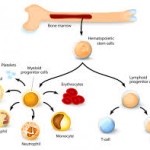Acute Leukemia
Leukemia  is a type of cancer in which abnormal white blood cells grow in an uncontrolled manner. The white blood cells divide, multiply, and then spread out of control. This interferes with the production of normal blood cells.
Understanding how normal blood cells are formed offers greater insight into leukemia. Most blood cells are formed in the bone marrow and by the other organs in the lymph system. The marrow is the soft, sponge-like center of large bones. In the marrow of a healthy person marrow, very young cells called stem cells multiply and mature into three types of cells: white blood cells, red blood cells, and platelets. Each type has a specific job to do in the body.
White blood cells fight infection by destroying bacteria a Leukemind viruses that invade the body.
Red blood cells carry oxygen from the lungs to all parts of the body.
Platelets help form blood clots, which control bleeding when a person is injured.
The lymph system consists of the bone marrow, lymph nodes, spleen, thymus, and tonsils. This system produces B-and T-lymphocytes (types of white blood cells). The B-lymphocytes fight infection by making substances called antibodies, which attack germs in the body. T-lymphocytes help to destroy invading organisms as well as cancer cells.
In leukemia, the marrow produces too many immature or abnormal white blood cells. As a result the leukemia cells crowd out the marrow and leave very little space for the normal blood cells to grow. Consequently, the number of healthy blood cells drops, and causes frequent infections, anemia, and bleeding problems.
This year about 31,500 Americans will be diagnosed with leukemia, including 28,800 adults and 2,700 children, and approximately 21,500 persons will die of leukemia. The chances of survival depend on the type of leukemia, the age and health of the person, and the medical treatment one receives. An average of 65% of people with leukemia survive for one year after diagnosis. This rate drops to about 44% five years after diagnosis.
Leukemia is grouped in two ways. One way is by the type of white blood cell that is affected. The other way is by how quickly the disease develops and worsens. This grouping is important because the speed with which leukemia progresses and the types of therapy that are given vary.
There are two main types of white blood cells: granulocytes and lymphocytes. Leukemia involving granulocytes is called myeloid or myelogenous leukemia. Leukemia involving lymphocytes is leukemia.
Leukemia can be either acute or chronic. Acute leukemia progresses quickly with many immature cells. Chronic leukemia progresses slowly with more mature, normal looking cells.
The two ways of grouping leukemia usually results in four main types of leukemia:
Acute leukemia is a malignant proliferative disease that originates from blood producing tissues in the body. It is characterized by symptoms that include anemia, bleeding, fever and infiltration symptoms such as enlargement of the spleen liver and lymph nodes.
Acute leukemia, also referred to by its common subtypes of acute lymphocytic leukemia (ALL) or acute myelogenous leukemia (AML), is a modern medical term that cannot be found in the ancient Chinese medical classics. However, its symptoms are similar to some TCM diseases. Acute leukemia symptoms fall under Traditional Chinese Medicine (TCM) disease categories of “pulmonary tuberculosis”, “hectic fever due to yin-deficiency”, “acute febrile diseases due to insidious pathogens “, “blood disorders”, “saber”, “subcutaneous nodules” and ” abdominal masses”.
| Pulmonary Tuberculosis:Â This disease causes the same kind of fever and anemia symptoms as in acute leukemia, and is mentioned in the famous medical classic “Sheng Ji Zong Lu” written in 1118 A.D. The title means a collection of medical records. | |
| Hectic fever due to Yin-deficiency:This is a low-grade fever similar to those experienced in leukemia. It results from a yin deficiency and is mentioned in the medical classic“Treatise on the Causes and Symptoms of Diseases” written in 610 A.D. | |
| Acute febrile diseases due to insidious pathogens: These diseases cause similar high fever symptoms as in acute leukemia associated infections. | |
| Blood disorders:Â These conditions produce the same bleeding symptoms such as nose bleeds, gum bleeding and blood in the stool. | |
| Saber:Â Named after its shape, this is the inflammation of the axillary (armpit) and neck lymph nodes caused by tuberculosis bacteria. | |
| Subcutaneous nodules or abdominal masses:Â This TCM condition presents as infiltration symptoms such as enlargement of the lymph nodes, liver and spleen. |
Causes
Western Medicine
Although there is no proven cause for leukemia, the disease is known to affect people of both sexes and all ages. It is also observed that leukemia affects more males than females, and is more often found in white people than in black people. On a positive note many people with one or more of known risk factors for leukemia never develop the disease, but most people who do develop the disease have no risk factors at all. Researchers have identified several possibilities for leukemia which are:
| Age | |
| Researchers believe that the chances of a normal gene changing into a cancerous gene increases with age. More than half of people who develop leukemia are over the age of 60. | |
| Smoking | |
| There have been reports of an increased risk of AML with cigarette smoking because it may trigger certain changes in a cell’s genes. | |
| Ionizing radiation | |
| A small percentage of leukemia cases are linked to exposure to high doses of radiation. For example, the survivors of the atomic bomb explosions at Nagasaki and Hiroshima in 1944 subsequently saw an increased incidence of leukemia. However, it has not been proven that exposure to large amounts of low-energy radiation from electric appliances, diagnostic imaging tests, or living near power lines will cause leukemia. | |
| Certain genetic conditions | |
| Scientists do know that most types of leukemias are associated with specific gene mutations. People who have rare genetic syndromes are at a higher risk of developing the disease. One example is Down’s Syndrome, in which there is a 20-fold risk of getting leukemia. Studies have shown that sex and ethnicity are factors in the disease as well. It is observed that leukemia occurs in males more often than in females, and in white people more often than in black people. The incidence of leukemia is high in Jewish people from Eastern Europe, but low in Asians. | |
| Chemical exposure | |
| Workers who have a long-term exposure to high levels of solvents such as benzene have a high rate of leukemia. Benzene is used in making medicines, dyes, and many other products. | |
| Drug therapy | |
| Certain drugs used to treat cancer called alkylating agents may also cause leukemia anywhere from two to nine years following treatment for various forms of cancer. The antibiotic chloramphenicol was associated with an increased risk of childhood ALL in mainland China. | |
| Rare viruses | |
| Human T-cell leukemia virus (HTLV-1) has been associated with the adult T-cell leukemia/lymphoma, which is often seen in geographical areas like the Caribbean and Japan. |
Chinese Medicine
The major cause of leukemia is a qi deficiency and pathogen invasion that disturbs the harmony and balance of the body. The ways in which these conditions lead to leukemia symptoms are described below:
| 1. | When the vital qi (vital energy) is deficient, pathogens can more easily invade the body and affect the normal functions of the heart,liver, nutrient qi and blood. When this happens, TCM febrile disease symptoms such as high fever, bleeding, coma and convulsion can occur. |
| 2. | If the body’s internal organs, especially the spleen and kidney, yin and yang, qi and blood, become exhausted after a long period of months or years, the production of qi, blood, essence and bone marrow decline. This leads to leukemia related symptoms such as anemia and fatigue. |
| 3. | A vital qi deficiency and pathogen invasion also affect qi and blood movement and the distribution of body fluid inside the body. Abnormal disturbances of these substances can cause blood and body fluids to leak out from the Taiyin (lung and spleen), Shaoyin (heart and kidney) and Jueyin (pericardium and liver) meridians, or the disturbance can cause them to accumulate and mix together. When this happens, they transform into a mass or nodule inside the body leading to infiltration symptoms such as liver, spleen or lymph node enlargement. |
Symptoms
Western Medicine
With an acute onset of leukemia, symptoms appear and quickly worsen. However, the early symptoms of leukemia may be overlooked because they are similar to the flu or other common illnesses. In chronic leukemia, symptoms may not appear for a long time. In general, they are mild at first and gradually worsen. Chronic leukemia is often found during a routine medical check-up before there are any symptoms.
While signs and symptoms for each type of leukemia differ, common symptoms of leukemia include the following:
| Fever, chills, and other flu-like symptoms | |
| Frequent infections | |
| Slow healing of minor cuts | |
| Loss of appetite and/or weight loss | |
| Persistent weakness, fatigue, and pale complexion | |
| Swollen or tender lymph nodes, liver, or spleen (more common in ALL and CML) | |
| Unexplained and easy bleeding or bruising | |
| Tiny red spots (petechiae) under the skin | |
| Swollen or bleeding gums due to clumping of white blood cells | |
| Sweating, especially at night | |
| Bone or joint pain | |
| Headaches, nausea and vomiting, blurred vision, and seizures if the leukemia cells collect in the brain or spinal cord | |
| Swelling of testicles or soreness in the eyes or skin |
Chinese Medicine
TCM practitioners will examine the individual, and categorize the symptoms under special syndrome groups known as “disharmony patterns.” Certain disharmony patterns are present during the different stages of the disease. Acute leukemia can be classified into following types:
I. Acute Attack Stage:Â This first phase of the disease is when abnormal white blood cells crowd the bone marrow and blood so that normal blood cells such as red blood cells, normal white blood cells, and platelets cannot be made in their normal amounts. There are four disharmony patterns under this stage.
| 1. | Damp and Heat Type |
| Individuals have symptoms like a fever that cannot be relieved after sweating, and do not experience an aversion to cold temperatures. Dizziness, fatigue, a full feeling in the stomach and abdominal areas, and diarrhea are common. The urine appears dark yellow and comes in scanty amounts. In serious conditions, individuals will additionally suffer from severe joint pain. | |
| 2. | Noxious Heat Type |
| Individuals suffer from a high fever, heavy sweating, and a pounding, throbbing pain in the head. Abnormal blood circulation symptoms such as bleeding from the nose, gums, or blood in the stool or urine can be present. The skin may also have a bruised appearance or have petechiae. The blood coagulation problems may cause life threatening symptoms in severe cases such as unconsciousness and bleeding into the brain. | |
| 3. | Accumulated Mass Type |
| Masses or nodules appear beneath the skin of both sides of the neck, axilla (armpits) and inguinal regions (groin area). Individuals may experience severe and persistent bone pain, accompanied with restlessness and fever. | |
| 4. | Interior Liver-Wind Stir- Up Type |
| Symptoms include severe pounding, throbbing pain in the head, impulsive vomiting, and a stiff neck. These can progress to more serious symptoms such as convulsions, spasms, and even paralysis of the face. In the most severe cases individuals experience an irregular and intermittent pulse, which leads to coma and finally death. The most severe cases occur when the leukemic cells enter the brain and impair its functioning. |
II Remission Stage:Â The remission stage is when individuals are recovering from leukemia or are cured from it. This phase begins when the symptoms and signs of leukemia disappear, and the number of white blood cells and other blood cells in the blood or bone marrow return to normal. There are two disharmony patterns grouped under this stage.
| 1. | Deficiency of Qi and Yin Type |
| Individuals have symptoms like heart palpitations, and shortness of breath. The complexion appears wan and sallow, and the body’s skin itself appears withered and pale. Additional symptoms that may be present include fatigue, poor appetite, chapped lips, dryness of the mouth and throat, restlessness, fever, spontaneous sweating or night sweats. | |
| 2. | Deficiency of Qi and Blood Type |
| Individuals have pale lips, nails and a pale complexion. The skin may appear bruised in certain areas and the mucous membranes inside of the mouth can have petechiae. Dizziness, vertigo, distension and fullness in the abdomen, poor appetite, and heart palpitations that worsen with activity may also be present. |
Diagnosis
Western Medicine
Medical history:Â Diagnosing leukemia involves several steps. Your doctor will want a detailed medical and family history to help decide if you are at risk for developing leukemia (for more information, refer to the section on the causes of leukemia). Other information includes the kind and duration of symptoms you are experiencing.
Physical exam:Â Your doctor will conduct a routine physical exam and will look for the swelling in the liver, the spleen, and lymph nodes.
Investigations:
If your doctor suspects you have leukemia, you will be referred to an oncologist. An oncologist is a doctor who specializes in diagnosing and treating cancer. He will request further blood tests and bone marrow examination. These procedures will help the doctor confirms the diagnosis, determine the type of leukemia, and to decide upon what kind of treatment is necessary.Â
| Blood tests:Â A sample of blood is examined under a microscope to determine the number and the type of blood cells. Most people with leukemia have too many white blood cells and not enough red blood cells or platelets. If the results of the blood tests are not normal, your doctor may do a bone marrow biopsy. | |||||||
Bone marrow aspirate and biopsy:Â A sample of bone and marrow cells is removed by inserting a long, hollow needle into the hipbone. These cells are stained and examined under a microscope. This test can confirm the diagnosis and reveal the type of leukemia.
|
|||||||
| Lumbar puncture:Â A small needle is inserted through the back to take out a sample of the fluid that surrounds the brain and spine. The fluid is then examined under a microscope to see if leukemia cells are present. | |||||||
| Imaging:Â One or more of the following tests are done to create a picture of the inside of the body and to see how far the leukemia has spread. These tests include X-rays, computed tomography (CT scan), magnetic resonance imaging (MRI), bone scan, and ultrasound. | |||||||
| Immunologic studies:Â This is an antibody-antigen reaction. An antibody is a protein made by lymphocytes, which is capable of interacting with a foreign substance (antigen), to inactivate it. This study will identify the antigens on the surface of cells. For example, the ALL may be either B-cell subtypes or T-cell subtypes. |
Cellular and genetic analysis:Â The following new tests have improved the diagnosis of different types of leukemia and the measure of disease progression. Currently, these tests are not routinely done outside of the clinical trials.
| Flow cytometry also uses the antibody-antigen reaction method. In this test, a sample of bone marrow, lymph node, or blood is treated with special antibodies attached to fluorescent molecules and passed in front of a laser beam. Each antibody sticks only to a certain type of leukemia cell and the laser causes leukemia cells to give off light. | |
| Cytogenetic studies are done to identify defects in the chromosome that may signal the presence of leukemia. The genetic association is especially higher in CLL. In CML, the Philadelphia chromosome is found in more than 90% of all cases. |
Deciding on treatment:Â It is recommended to get a second opinion about the diagnosis and treatment plan. Doing this may help the person to confirm the diagnosis and review the proposed course of treatment. In many centers where leukemia is treated, the person may be asked to participate in clinical trials (treatment studies). Clinical studies help doctors find out whether a new treatment is safe and effective.
 Chinese Medicine
Determining the circumstances and manifestations of a disease through inquiry, and by observing the individual’s symptoms are important in TCM. Diagnosis is based on the following four examination techniques.
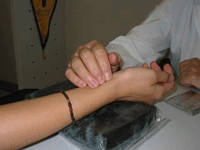 |
Through these four techniques a variety of symptoms and signs will be used to identify the individual’s disharmony pattern. This is crucial because at the various stages of a disease, a variety of disharmony patterns are present which require different types of therapy. This is why individuals with the same disease are often treated very differently by their TCM practitioner.
A TCM practitioner will not diagnose an individual with acute leukemia. Instead, he or she will diagnose the individual with a disharmony pattern. Particular attention is paid to the following points for differentiation of the various disharmony patterns.
| 1. | Distinguishing the locations of the illness to find out which organs or systems are involved. |
| 2. | Distinguishing the nature of illness to decide whether the syndrome is yin, yang, excess or deficiency type. |
| 3. | Distinguishing the stage of illness to classify the disease in its acute or remission stages. |
Acute leukemia commonly has the disharmony patterns described below:
I Acute Stage of Acute Leukemia
| 1. | Damp and Heat Type |
| This often occurs in the early stage of leukemia, and is mainly caused by a mild deficiency of qi, and extreme excess of pathogenic heat. Dampness is produced when the stomach and spleen cannot function properly to transform and transport nutrients. As the dampness accumulates over time, it turns into a heat evil which can inflict damage to the body. Upon examination, the tongue is red and covered with yellow, greasy fur. The pulse is rapid. | |
| 2. | Noxious Heat Type |
| This usually occurs at the time when normal blood cell production of white blood cells, red blood cells and platelets is exhausted due to the overproduction of leukemic cells in the bone marrow and blood. At this stage, noxious heat is extremely excessive, and the remaining vital qi is sparse. Noxious heat and other toxic waste products are produced when the organs hyperfunction and an increase in metabolism is created that results in material consumption of substances such as nutrients and body fluids. As a result, the noxious heat damages the meridians and blood and causes bleeding symptoms. Upon examination, the tongue is red and dry and covered with yellow, dry fur. The pulse feels rolling and rapid. | |
| 3. | Accumulated Mass Type |
| Noxious heat and phlegm evils transform into masses when they stagnate, and block the collaterals(part of the meridian system) in the course of leukemia. Upon examination, the lips and tongue appear pale, and the tip and the margin of the tongue exhibits petechiae. The pulse feels deep and fluttery. | |
| 4. | Interior Liver-Wind Stir-Up Type |
| This usually occurs at the terminal stage of acute leukemia, and develops from the stirring up of interior wind evils. In this stage, the body accumulates excessive noxious heat, which consumes body fluids and damages the blood and meridians. This triggers endogenous pathogenic wind that seriously disturbs the movement of qi and blood. Wind evils affect the liver, which is responsible for helping with the flow of qi and blood. The wind evils are the result ofyin deficiency, hyperactivity of liver-yang or excess heat evils. This type can also be caused by phlegm evils blocking the clear orifices such as the mouth. Upon examination, the tongue appears red and dry is coated with little or no fur. The pulse is stringy and rapid. |
II Remission Stage of Acute Leukemia
| 1. | Deficiency if Qi and Yin Type |
| This occurs in a late stage of leukemia when the body is trying to recover from the damage the disease has inflicted. Qi and yin have been exhausted for a long period and the heart, spleen and body fluid distribution are no longer functioning normally. Upon examination, the tongue appears red and is covered with scanty or scaled fur. The pulse feels deep, thready and rapid. | |
| 2. | Deficiency of Qi and Blood Type |
| This also occurs at the late stage of leukemia where the body is starting to recover. During this stage, vital qi begins to convalesce, and the heat, wind or damp evils start to disperse. The body is getting better from the illness, but the impaired organs, qi and blood are still very weak. Upon examination, the tongue is pale and swollen with indented margins, and covered with a thin, white fur. The pulse sign is deficient and heavy or soft and thready. |
Click here to see the development of leukemia from a TCM perspective
III Differentiating acute leukemia from other illnesses
In the clinical diagnosis of TCM, acute leukemia should be differentiated from other similar diseases.Â
| 1. | Consumptive Disease |
| This is a disease caused by insufficiency of vital qi and blood, or organ deficiency. When the individual experiences fever and anemia, it should be distinguished fromaplastic anemia, which comes under the category of consumptive disease. In the whole course of this type of disease, there are no nodules or abdominal mass, so it is easy to differentiate. | |
| 2. | Blood Disorders |
| Blood disorders involve spontaneous bleeding diseases such as thrombocytopenia (not enough platelets to clot the blood), abnormal blood vessels and blood coagulation factor deficiencies. These specific blood disorders can be detected in leukemia patients through blood tests. | |
| 3. | Fever Caused by Exogenous (external) evils |
| This type of fever is usually induced byseasonal pathogens. It usually presents with persistent high fever and excessive interior heat. Interior heat is produced when there is a pathological disturbance in the physiological functions of the qi, blood, body fluids and organs. With this type of fever, the individual’s blood parameters are normal, and it is easy to recover from the fever. However, leukemia sufferers usually have a persistent low-grade fever, but when it is complicated by infections, the temperature will be high. |
Note:Â If a TCM practitioner suspects there might be a serious problem that Chinese medicine alone cannot treat, he or she will recommend the individual see a western doctor for further follow up.
Treatment
Western Medicine
New and more effective ways of treating leukemia are being discovered annually. Many people with the disease can live for many fruitful years and be cured.
Doctors design a treatment plan to fit each individual’s needs. They consider the type of leukemia, how far it has spread, and whether the person has had other cancer before. The person’s age, symptoms, and general health are other factors of consideration.
Although acute leukemias show a more aggressive course, they are more often curable than chronic leukemias. The treatment of acute leukemia attempts to kill leukemia cells so they never grow back. Most doctors say that a person is cured if he or she shows no symptoms for five years after treatment. Chronic leukemias are less often curable. The treatment of chronic leukemia attempts to delay the leukemia from getting worse and to manage symptoms.
Treatment of acute leukemia usually involves three stages:Â 1) induction for remission, 2) post remission, and 3) therapy at the time of relapse. In addition, preventive therapy for leukemia in the brain is given to persons with ALL.
The standard treatments for adult leukemia are chemotherapy and bone marrow transplantation. Radiation and immunotherapy are used in specific types of leukemia. Since the leukemia cells spread throughout the body, surgery cannot cure this disease. However, surgery is done in some cases of lymphocytic leukemia. For example, if the spleen is swollen a doctor may take out the spleen.
Radiation uses X-rays or other high-energy rays to destroy leukemic cells. It is administered either to the whole body or to only one area. Radiation is used for leukemia in the central nervous system (which includes the brain and spinal cord and in the testicles). It is also used for pain caused by spinal cord compression or expansion of bone marrow as a result of the leukemic cells crowding the bone marrow.
Immunotherapy tries to get the body to fight leukemia. It uses protein made by the body or created in a laboratory to boost, direct, or restore the body’s defenses against disease. Use of Interferon-alpha helps to strengthen the immune system and may delay the progression of the CML.
 |
Chemotherapy is the most common way to treat leukemia. Chemotherapy means drug therapy in which various drugs are used either in combination or as a single agent. Drugs taken by mouth or injected into a vein enter the bloodstream and kill leukemia cells in most part of the body. This is called systemic chemotherapy.
Rapidly multiplying cells often are more sensitive to the effects of chemotherapy. Most anti-leukemic drugs interact with DNA, the genetic material contained in all human cells. This interaction changes the DNA in such a way that the cancer cells are killed or are prevented from producing more cancer cells. Unfortunately, rapidly dividing normal cells in the body are also affected by these drugs, which can cause serious side effects.
| Therapy for induction of remission.Induction refers to initial chemotherapy given to the person with leukemia to induce or produce a complete remission. Complete remission means there are no signs or symptoms of leukemia, and the number of white blood cells and blood cells in the blood and marrow is normal. The success of treatment depends on factors such as the ability to tolerate intensive treatment, the patient’s age, and the type of drug regimen.
In AML, the typical induction regimen consists of a combination of anti-cancer drug cytarabine and either one of the anthracyclines: daunorubicin, mitoxanthrone, or idarubicin. This regimen results in 60 to 80% of persons having complete remission. One exception is the treatment of patients with acute promyelocytic leukemia (APL), a subtype of AML. In APL, a defect in the retinoic acid receptor prevents the normal growth of promyelocytes (precursors to normal myeloid cells). The all-trans-retinoic acid (Tretinoin), a vitamin A derivative, causes leukemia cells to mature and die. This drug is used in addition to the chemotherapy. Another drug, arsenic trioxide, also is available to treat APL. In ALL, the most commonly used drugs are vincristine, cytarabine, cyclophosphamide, L-asparaginase, and prednisone. In CML, drugs like hydroxyurea or interferon have been used. A newly approved oral drug, imatinib mesylate (Gleevec) has been successful in promoting remission among the people enrolled in clinical trials. Its effect on long term survival still needs to be seen. In CLL, chlorambucil, fludarabine, and cyclophosphamide are commonly used in treatment. Chlorambucil produces a 5-year survival in 48% of people affected. With prolonged use, however, the disease becomes resistant to these drugs and progresses. |
|||
| Post-remission therapy. Once the person with leukemia achieves a complete remission and recovers from the adverse effects of induction therapy, post-remission chemotherapy begins. This therapy tries to kill any remaining leukemia cells. Without further treatment, leukemia will recur in the majority of persons. The same drugs may be administered in a modified schedule or in doses.
In AML, high-dose cytarabine is used in persons less than 55 years old. This results in a long-term disease free survival of 5 years by 15 to 50%. In ALL, the person continues to receive chemotherapy but in smaller doses. A typical maintenance regimen consists of low-dose oral methotrexate and 6-mercaptopurine. In order to stay in remission it may be continued up to several years. |
|||
Therapy at the time of relapse.Relapse refers to the return of leukemia cells, which were once absent, in the bone marrow. Response to further chemotherapy following relapse is usually poorer than the initial response after the induction therapy. For patients with an eligible donor, bone marrow transplantation (BMT) is an option and it may improve chances of survival.
|
|||
Bone marrow transplant (BMT). Bone marrow transplants offer some people with leukemia the best chance for a cure. It is usually performed when the leukemia is in remission but has high risk for relapse ; does not respond fully to the treatment, or relapses after treatment. In order to perform the transplant, higher doses of chemotherapy drugs are given. These high dose drugs effectively destroy the person’s leukemia cells. They also kill the normal infection-fighting cells of the bone marrow. To compensate for this destruction, healthy marrow cells are taken from the donor whose tissue type is the same as or almost the same as the person with leukemia. These are infused or transplanted into the person’s bloodstream through an intravenous (IV) catheter. It is hoped that the transplanted bone marrow will produce healthy white blood cells on its own.
There are two types of marrow transplants. In the autologous marrow transplantation, the person’s own healthy bone marrow that has been saved and “cleansed” of leukemic cells are re-infused to replace marrow that was destroyed. In the allogenic transplantation, marrow from a donor with a match of all six cell-markers, known as human leukocyte antigens (HLA), is used to replace the diseased marrow. The healthy marrow may be obtained from either identical twins (best match), or HLA-matched brother or sister, and more recently, from a person who is not related to the person with leukemia.
Based on most clinical studies, the overall survival rate among the different types of BMT was similar. BMT is successful about 50% of the time when measured two years after the treatment. There was a higher relapse rate in autologous BMT due to the failure of getting rid of all the leukemia cells. However, more persons died in the allogeneic BMT due to the complications.
Complications from treatment
Chemotherapy related complications
|
|||||||
Transplant related complications
|
New treatments:
Scientists and physicians are constantly searching for new and better ways to treat leukemia. Their effort focuses either on improving the efficacy of current drug therapy, reducing its side effects, or trying to attack leukemia cells in new ways.
Chinese Medicine
In TCM, the treatment of acute leukemia is based on the type of disharmony pattern.
ACUTE STAGE:
| 1. Damp and Heat Type: |
Therapeutic aim: Due to an accumulation of damp-heat and toxic pathogens in the whole body, treatment focuses on clearing away heat and dampness evils, eliminating pathogens, and removing toxic substances.
Example of Prescription:Â Chaiqin Chenling decoction with modification
| chai hu | chinese torowax root |
| huang qin | baical skullcap root |
| long dab cao | chinese gentian |
| zhi zi | cape jasmine fruit |
| chen pi | dried tangerine peel |
| fu ling | Indian bread |
| ban xia | pinellia tuber |
| ze xie | oriental water plantain rooti |
| zhu ling | chuling |
| bai zhi | large head atractylodes rhizome |
| lu gen | reed rhizome |
| she she cao | herba hedyotis diffusa |
| qing dai | natural indigo |
Â
| 2. Noxious Heat type |
Therapeutic aim: This is caused by excessive noxious heat in the interior, and the disturbance of nutrient qi and blood. Treatment includes clearing away heat evils, removing toxic substances, and clamping down on blood circulation to stop bleeding.
Example of Prescription: Shuiniujiao Dihuang decoction with modification
| shui niu jiao | buffalo horn |
| sheng di | dried rehmannia root |
| dan pi | tree peony bark |
| chis hao | red peony root |
| yin hua | honeysuckle flower |
| lian qiao | weeping forsythia capsule |
| zhi zi | cape jasmine fruit |
| sheng shi gao | gypsum |
| bai hua she she cao | herba hedyotis diffusae |
For delirium caused by intensive heat, Zixue pill, Zhibao pill or Angong Niuhuang pellet is helpful.
| 3. Accumulated Mass type |
Therapeutic aim: This is caused by stagnant phlegm lingering in the interior and blocking the collaterals (meridians). Therefore, treatment includes promoting blood circulation, removing obstruction in meridians, and softening and resolving hard masses.
Example of Prescription:Â Taohong Siwu decoction with modification
| tao ren | peach kernel |
| hong hua | safflower |
| chuan xiong | szechwan lovage root |
| dang gui | chinese angelica |
| di huang | rehmannia root |
| chis hao | red peony root |
| hai zao | seaweed |
| bie jia | turtle shell |
| sheng mu li | fresh oyster shell |
| zhe bei | thunberg fritillary bulb |
| xia ku cao | spike of prunella |
Â
| 4. Internal Liver-Wind Stir Up Type |
Therapeutic aim: Individuals with this type are in the most critical condition. Emergency treatment includes using aromatic drugs for resuscitation, and suppressing the hyperactive liver to relieve the wind syndrome.
Example of Prescription:Â Zhengan Xifeng decoction
| huai niu xi | achyranthes root |
| sheng long ku | unprocessed fossil fragment |
| sheng bai shao | white peony root |
| tian dong | asparagus root |
| sheng mai ya | fresh germinated barley |
| dai zhe shi | ochre |
| sheng mu li | fresh oyster shell |
| xuan shen | figwort root |
| chuan lian zi | szechwan chinaberry fruit |
| yin chen hao | virgate wormwood herb |
| gui ban | tortoise shell |
| gan cao | liquorice root |
Additionally, Zixue pill and Angong Niuhuang pellet can be taken with water.
REMISSION STAGE:
| 1. Deficiency of Qi and Yin Type |
Therapeutic aim: The toxins and heat evils impair heart-qi, and burn primordial yin. As a result, treatment benefits the qi, nourishes the heart, aids the yin and invigorates the kidney.
Example of Prescription:Â Shenmai, Erzhi plus Dihuang decoction with modification
| bei sha shen | coastal glehnia root |
| mai dong | dwarf lilyturf tuber |
| wu wi zi | chinese magnoliavine fruit |
| nu zhen zi | glossy privet fruit |
| han lian cao | ecliptai |
| gou qi chi | barbary wolfberry fruit |
| sheng di | dried rehmannia root |
| dan pi | tree peony bark |
| fu ling | indian bread |
| yi yi ren | coix seed |
| bai ji li | puncturevine caltrop fruit |
| gui ban | tortoise shell |
For individuals with residual toxic substances:
| she she cao | herba hedyotis diffusae |
| ban zhi lian | chinese lobelia herb |
Â
| 2. Deficiency of Qi and Blood Type: |
Therapeutic aim: This type is caused by the deficiency of both qi and blood. In TCM, the spleen is responsible for the production of blood and qi. The kidney is responsible for storing the essence, which is the source for blood and qi. Therefore, treatment includes replenishing the qi, nourishing the blood, and invigorating the spleen and kidney.
Example of Prescription:Â Danggui Buxie decoction plus Sijun, Bazhen decoction with modification
| huang qi | milkvetch root |
| dang shen | pilose asiabell root |
| dang gui | chinese angelica |
| bai zhi | large head atractylodes rhizome |
| fu ling | indian bread |
| shu di | processed rehmannia root |
| qi zi | barbary wolfberry fruit |
| nu zhen zi | glossy privet fruit |
| e jiao | donkey-hide gelatin |
For individuals with residual toxic substances and hyperactivity of minute collaterals (meridians):
| she she cao | herba hedyotis diffusae |
| xiao ji | field thistle herb |
Prevention
Western Medicine
Prevention of leukemia is often difficult because the exact causes of leukemia are not understood.
| Do not smoke. | |
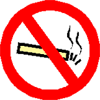 |
|
| Avoid exposure to various chemicals such as benzene. The degree of risk from these chemicals depends on the intensity and duration of exposure. | |
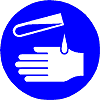 |
|
| Take safety precautions when working with hazardous chemicals or radiation exposures. Follow the environmental safety rules written to protect the workers in the industry. | |
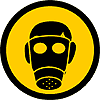 |
|
| There are no special tests recommended for detecting the leukemia early. The best way to detect leukemia in initial stage is to report any symptoms to the doctor right away. Persons with inherited genetic illnesses that are known to increase the risk of developing the disease should talk to their doctor about having regular checkups. | |
 |
Chinese MedicineFrom TCM’s viewpoint, prevention includes two aspects:
| 1. | Preventing the onset of disease |
| 2. | Preventing the progression of disease |
Â
| Prevention of Disease Onset: | |||||
| Stay away from evils such as wind and heat that invade the body and cause disease is important. Eat a proper diet, exercis regularly, maintain peace of mind by having an optimistic outlook on life. Get enough rest, and maintain a balanced lifestyle. | |||||
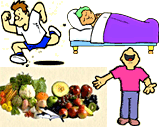 |
|||||
| Prevention of Disease Progression: | |||||
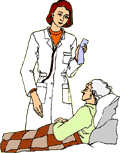 Individuals who suffer from acute leukemia should maintain an optimistic attitude, and actively participate with doctors in deciding treatment options. Keeping up good personal hygiene, eating a moderate diet, avoiding smoking and alcohol and avoiding overstrain or mental excitement are also important ways to prevent disease progression. Individuals who suffer from acute leukemia should maintain an optimistic attitude, and actively participate with doctors in deciding treatment options. Keeping up good personal hygiene, eating a moderate diet, avoiding smoking and alcohol and avoiding overstrain or mental excitement are also important ways to prevent disease progression.Special attention should be paid to following conditions:
|
|||||
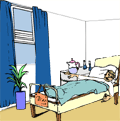 |


